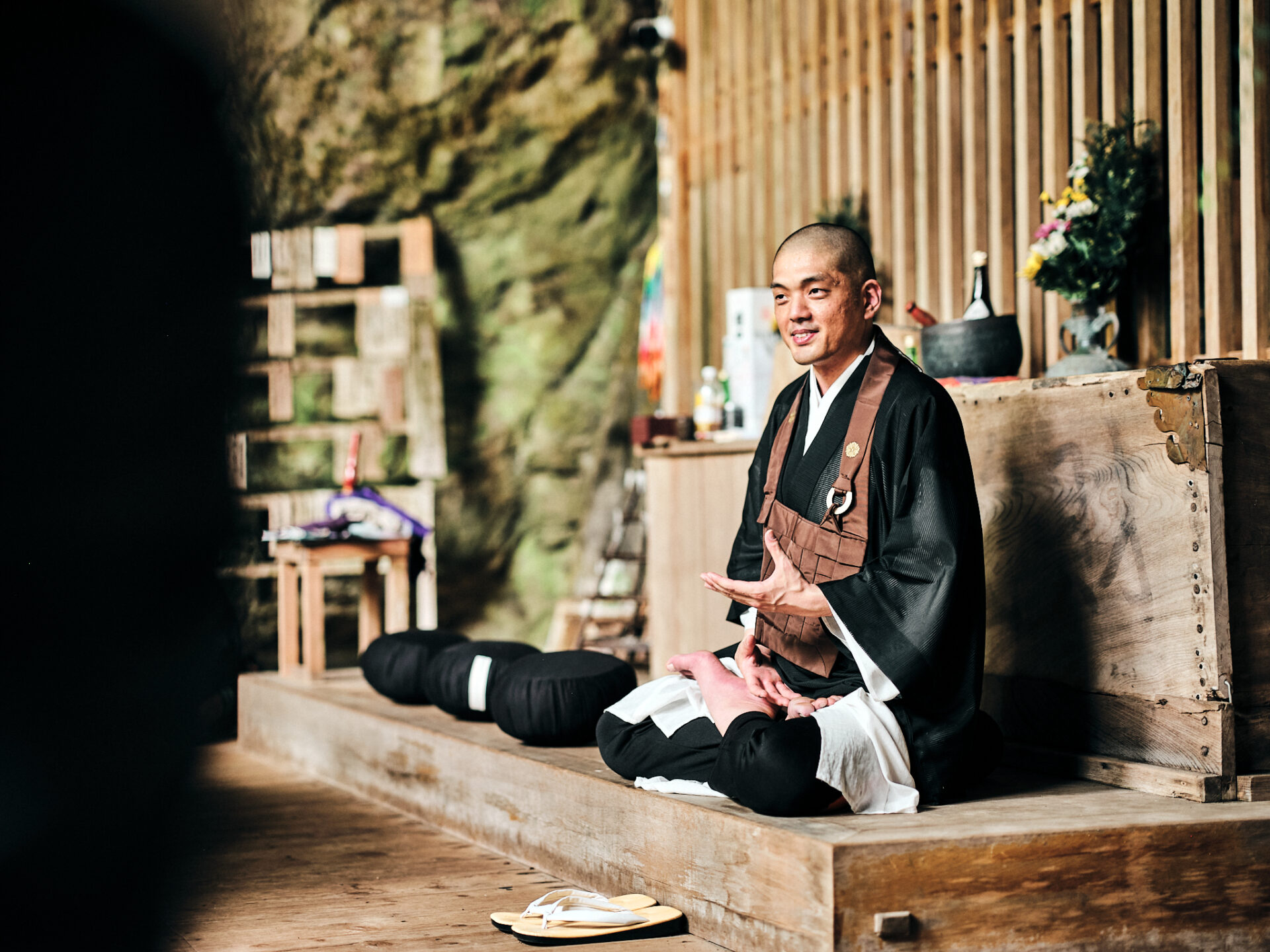
Emptying the Mind and Facing One’s Own Way of Life: The Teachings of Zen Handed Down for the Future

馬場 英俊
Eishun Baba
Kumamoto-city [Kumamoto]
Eishun Baba
Born in Kumamoto City in 1989. Deputy head priest of Ungan Zen Temple, of the Sōtō Zen school. Inspired by his grandfather and father, both head priests of the temple, he aspired from an early age to inherit its legacy. He pursued formal training at a Sōtō Zen high school in Yamaguchi Prefecture. Today, while guiding visitors through the temple grounds, he also conducts zazen sessions in Reigandō and shares the teachings of Zen.
Ungan Zen Temple, a Sōtō Zen monastery in Kumamoto, has a history of more than 650 years. Its deputy head priest, Eishun Baba, was born and raised here, living his life alongside the teachings of Zen. The temple grounds are also home to Reigandō, the cave where Miyamoto Musashi spent his final years and wrote The Book of Five Rings. Here, the practice of “emptying the mind” and questioning one’s way of life has been preserved for generations. What meaning does the simple act of sitting in meditation hold for us today? And what does Baba hope to convey through the experience of zazen?
Growing Up at a Zen Temple, Close to Reigandō
Ungan Zen Temple stands at the foot of Mount Kinpō, about a 20-minute drive west from central Kumamoto toward the Ariake Sea. Founded in 1351 by the monk Tōryō Eiyo, it is one of the few Sōtō Zen temples in the city. Baba was born and raised here, where his father and grandfather had served as priests. For him, life at the temple was simply part of daily existence.
The grounds feature a treasure hall displaying conch shells and dragon scales, an Enma Hall, a statue of Kannon, and a group of 500 stone arhats donated over 24 years by the wealthy merchant Gihei Fuchitaya. These statues, depicting the Buddha’s disciples in postures ranging from laughing to looking bored, give visitors a sense of familiarity.
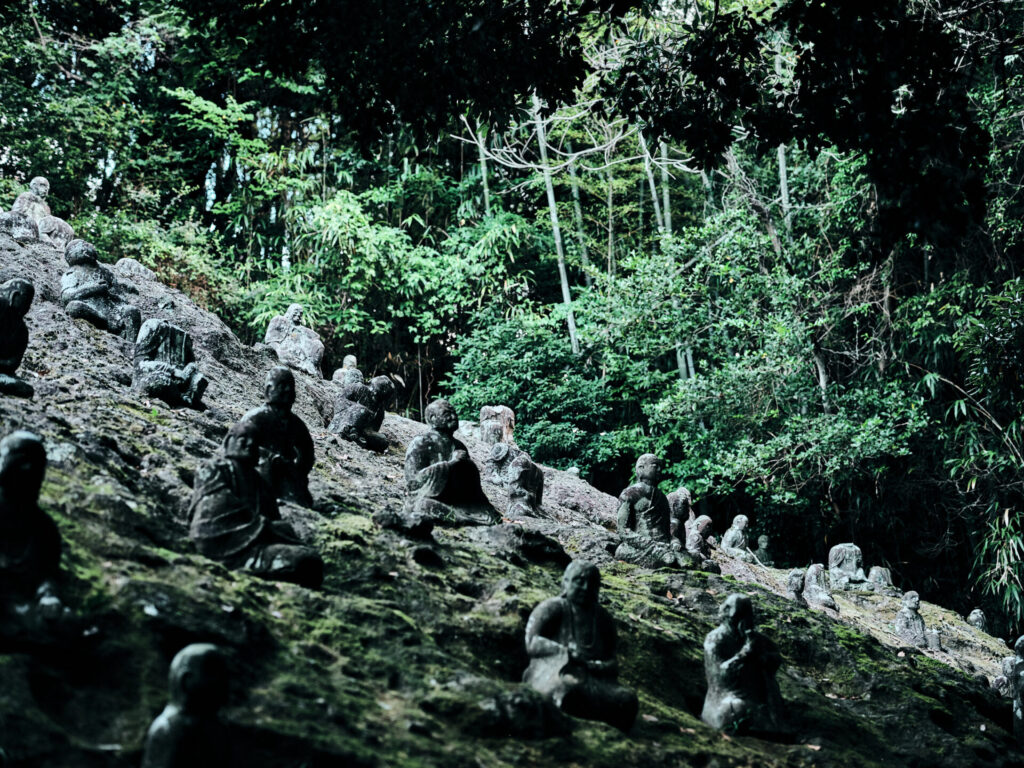
A short walk further leads to a vast cave—Reigandō, famous among Musashi enthusiasts. Invited by the Hosokawa clan of Kumamoto, Musashi spent his final years here, composing The Book of Five Rings. Long before that, however, the cave had been a site of ascetic practice for mountain monks, regarded as sacred for over a thousand years.
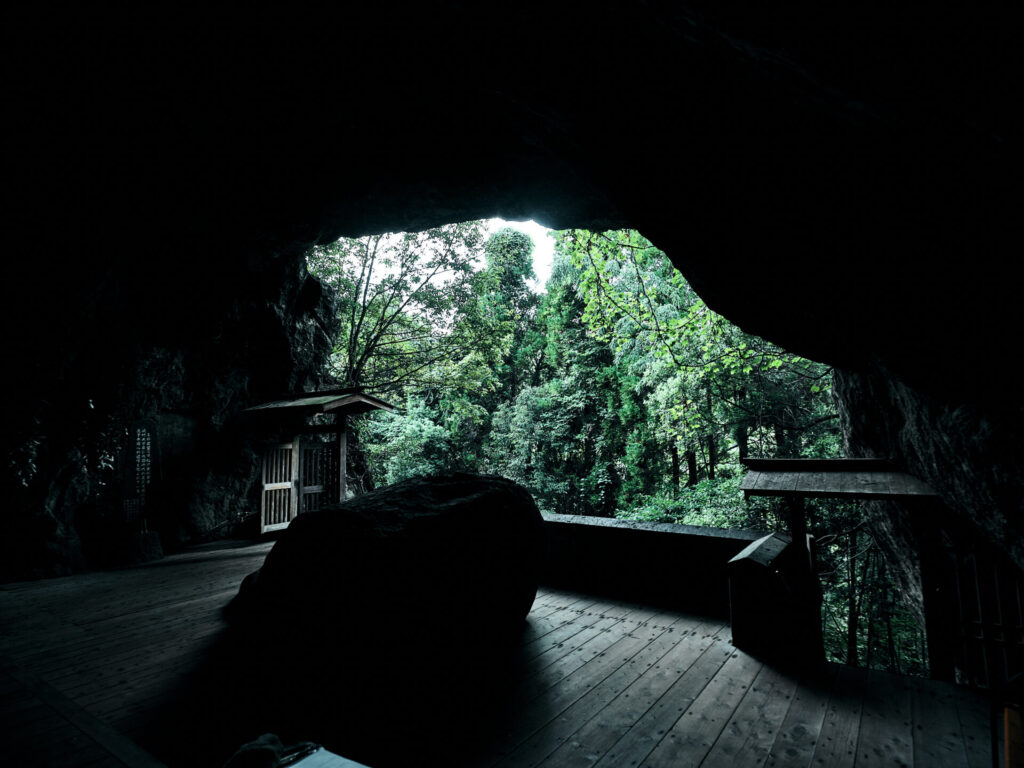
Baba recalls, “I grew up watching my grandfather and father as priests. From a young age, I assumed I would become one myself. I thought that by inheriting the temple, my family would be secure, and I never questioned it.”
Yet it was not until he left home to study at a Sōtō Zen high school that he began to consciously engage with the teachings of the temple.
The Practice of “Just Sitting”: From Form to Emptiness and Awakening
Sōtō Zen, introduced to Japan from China during the Kamakura period, belongs to the Zen school of Buddhism. Its central practice is shikantaza—“just sitting.” At high school, Baba’s training largely revolved around this zazen.
“In Sōtō Zen, we are taught first to form the correct posture. Hands rest palm-up, with the thumbs gently touching, forming what is called the hokkaijōin mudra. If this shape collapses, it reflects a distracted mind; if it is steady, the mind naturally steadies too. With the back straight and the mind emptied, we simply sit.
Of course, it is difficult. Desires and distractions always arise. But by setting them aside and returning to emptiness, we can face what we truly are and gain insight into how we should live. That is the meaning of zazen.”
Baba also notes that Sōtō Zen emphasizes jiriki-hongan—relying on one’s own effort. Through zazen, one learns to see oneself clearly and work to fulfill aspirations without leaning on others.
He adds humbly, “I’m still in training myself. This is how I understand zazen now, but I may still be lacking in many ways.”
After all, zazen was the very practice used by Shakyamuni, the Buddha, in his search for awakening. Faced with the four inevitable sufferings of birth, aging, illness, and death, he taught that by sitting in stillness and looking deeply into one’s own heart, one can awaken to a way of living.
What Musashi May Have Found at Reigandō
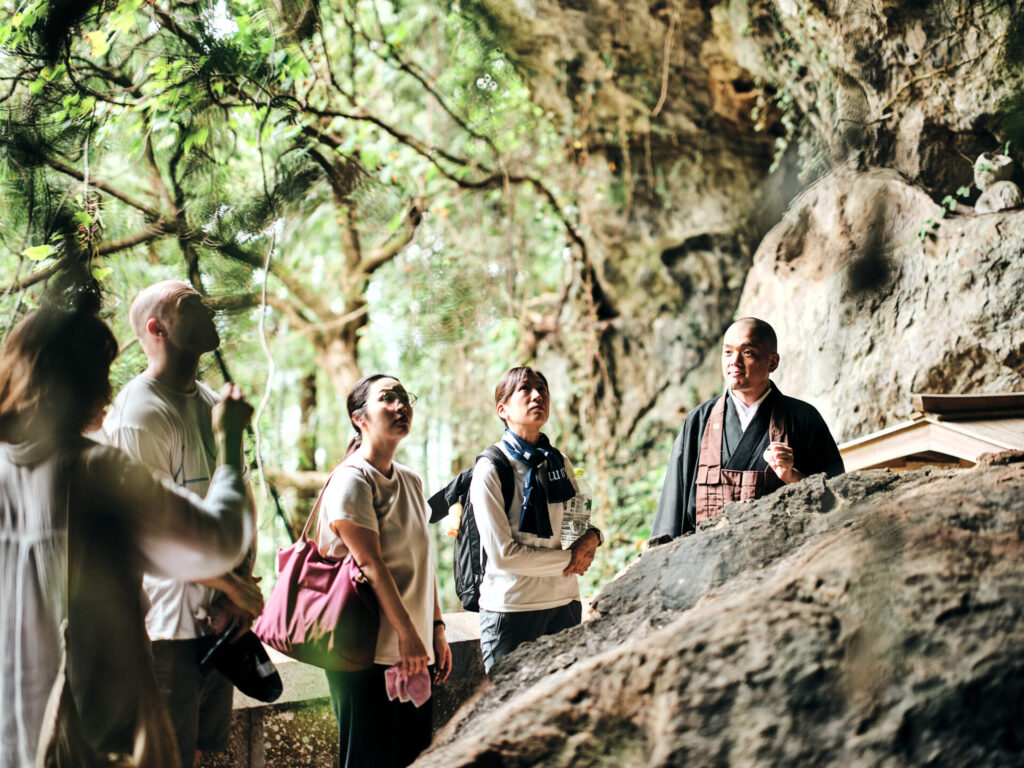
Reigandō has long been revered as sacred. Legends tell of a noblewoman who offered water there daily in the Heian period, and for centuries it was used for ascetic practice. But its fame spread widely after Miyamoto Musashi composed The Book of Five Rings there.
“In his later years, Musashi said, ‘The gods and Buddhas are to be revered, but not relied upon.’ In other words, he respected them but did not devote himself to any particular religion. Yet as he approached the end of his life, I believe he sat in meditation at Reigandō and experienced the state of emptiness. In the final scroll of The Book of Five Rings, he wrote that the ultimate state is not victory but the realm of no-mind. That must have come from his experience here.”
Zazen as a Time of No Thought and Inner Peace
For Sōtō Zen, the greatest teaching lies in the “emptiness” realized through zazen. Baba now offers zazen sessions at Reigandō for visitors from across Japan and abroad.
“In today’s world, the chance to experience emptiness is rare. Most people live under the constant pressure of time. That is why I want them to experience a moment of deliberately thinking nothing. Through emptiness, they can turn their gaze inward.”
Most participants struggle at first—five minutes feels long, and after ten their legs begin to ache. Yet many also report feeling their emotions settle and a sense of peace arise. Some say, “It was a special experience,” or, “I felt freed from worries I had carried for years.”
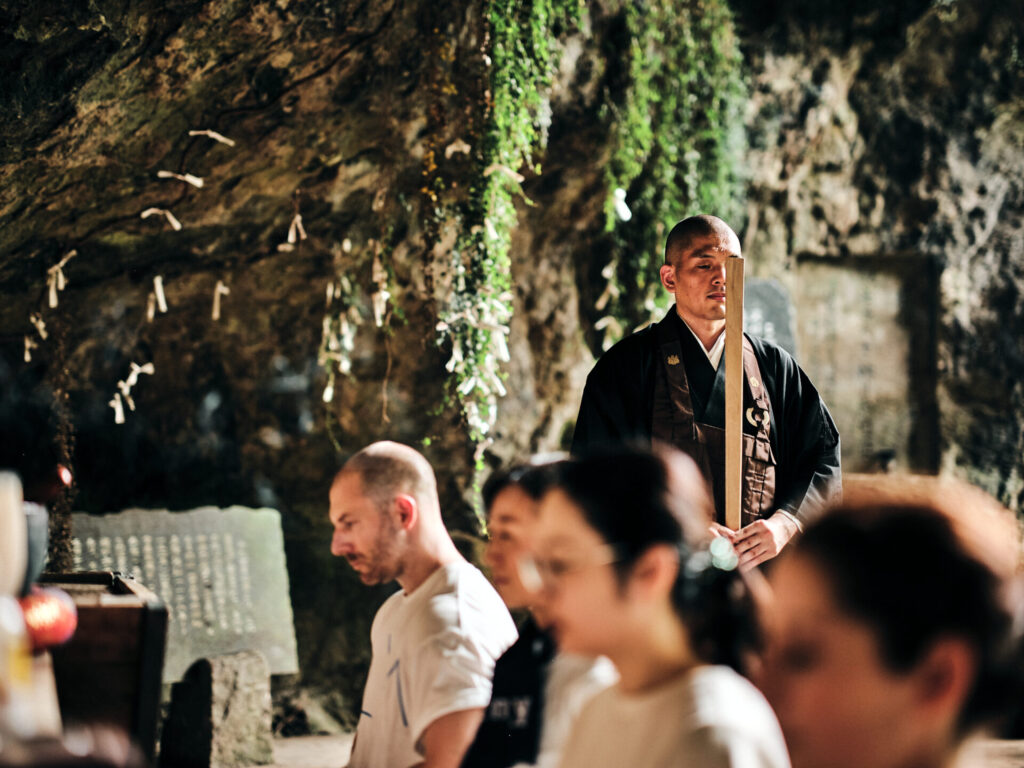
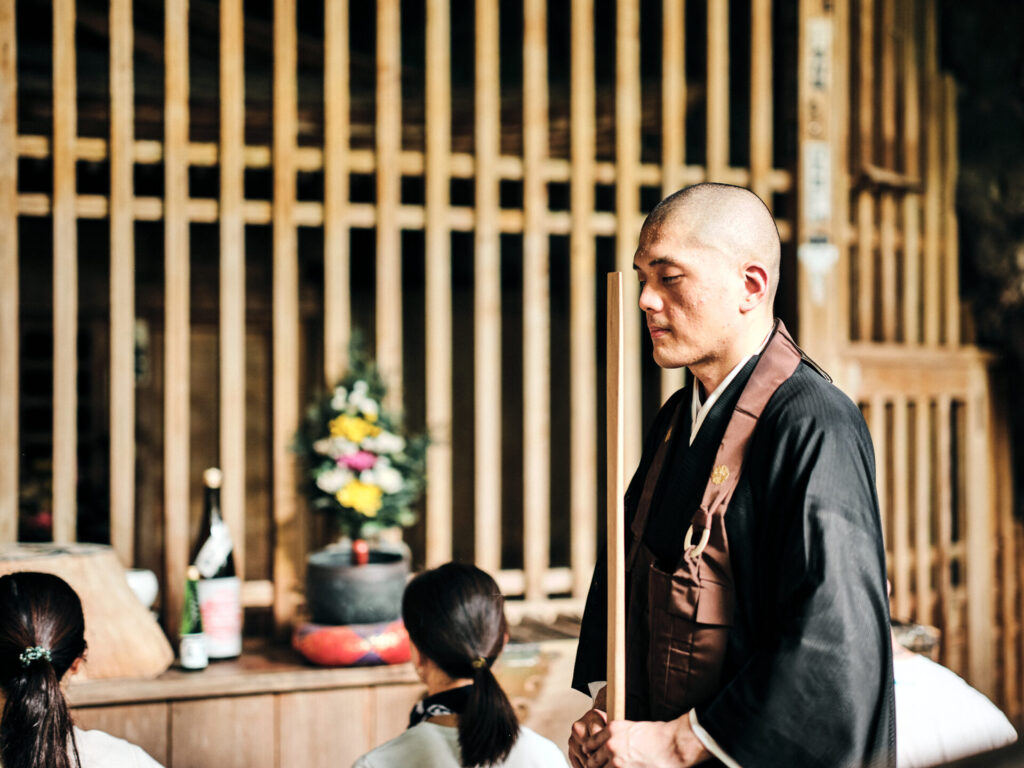
“With practice, you begin to feel moments of timelessness,” Baba explains. “In Sōtō Zen, the time it takes for one stick of incense to burn—about 50 minutes—is called icchū. With training, it can feel like just a minute or two. The sitting begins, and before you realize it, it has ended. That sense comes from learning to switch into emptiness. Afterward, it feels like waking from a deep sleep. Over time, you gain perspective on yourself and develop self-control.”
He also hopes that through zazen, people will rediscover what it means to live. Today, many only encounter monks at funerals, associating Buddhism with death. But in Sōtō Zen, the purpose of zazen is to discern one’s way of living.
“At the end of each session, I remind participants that zazen can be practiced in daily life. You can sit quietly at home, cross-legged or even on a chair. Time and place don’t matter. What matters is making zazen part of yourself. Then, without effort, you learn to shift into emptiness.”
What Should Be Passed to the Future?
When asked what he wishes to hand down to the future, Baba reflects:
“From childhood, I have been supported by Ungan Zen Temple and Reigandō. I never cease to feel gratitude for the environment that raised me. The best way I can repay that is by passing on what has been inherited from the past to the future. For that, it is essential that this temple continues to be loved and cherished by many.”
With more than 650 years of history, Ungan Zen Temple, the cave of Reigandō, and the spirit of Zen itself have guided generations. Through zazen, Baba has found his own path: to serve as a “connector,” preserving and transmitting them to posterity.
Buddhism is a teaching that turns us toward life, and zazen is the practice that brings us closer to its truth. At Ungan Zen Temple, amid quiet far from the noise of the city, time flows for those who wish to face themselves.
